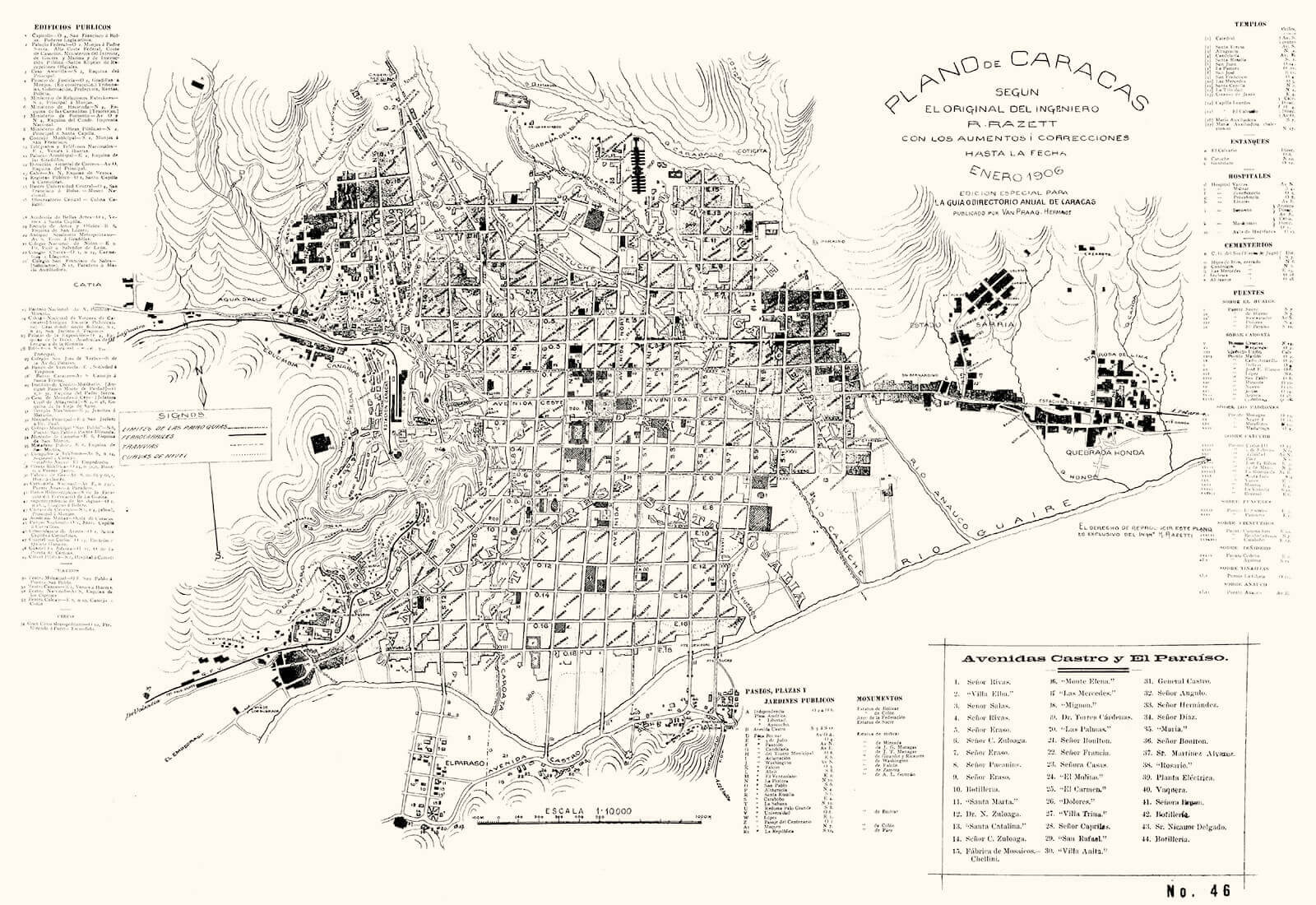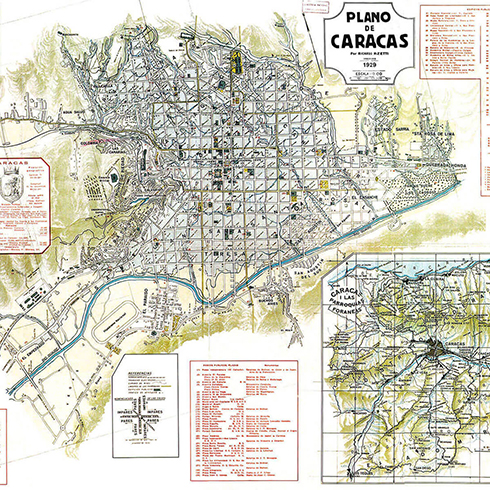Caracas Plan, 1906. According to the original by Ricardo Razetti.HC-36
El Paraíso
In this next Razetti plan, we may see how, in early XX century, an urban arm first crosses the river Guaire into the South. Due to an earthquake, a bridge, and a tram, a new neighborhood inCaracas’s southwest is created that, with its name, announces the coming of a pretentious mirage.
The Caracas earthquake of 1900 left its residents quite shaken, and it led the wealthier ones to move into this new neighborhood that had even houses marketed as “anti seismic”. So starts the disruption of the continuous urban grid; through long gardens, families begin isolating themselves from their neighbors, replacing the previous desirable living condition that was living near the Bolívar Square. If before, a house with a courtyard was already a micro cosmos of the city and its square, now, the «quinta» (modeled as a country house), with its aggressive pretention of never becoming a city represents a yearning of the countryside and a denial of what is urban. The variety of styles that these El Paraíso houses allowed, gained notoriety as a celebration of autonomy and diversity, to the point that Razetti chose to make the greatest houses built in those six years, the highlight of his plan; listing them with their respecting owners’ last names: Zuloaga, Eraso, Torres Cárdenas, Boulton, and another thirty or so families.
The lands of the Caracas valleys will begin to be seeded with what would later be called «Isolated family homes»; conceiving anything more apart from a city’s essence is quite difficult. With time, urbanism, contemporary architecture, urban legislation, and even a few boleros («yo tengo ya la casita que, tanto te prometí» [I already have the little house that I so much promised you]), will start to celebrate this isolating attitude. The tram that crosses the Guaire’s border represents an example of how the network determines the development of the grid, by allowing the citizen to flee from its rigor.
Urbanism v. Neighborhood
El Paraíso and another series of newly created neighborhoods, ended by occupying more extension than did the original recipe proposed by the colonial grid. What is the difference between neighborhood and an urbanism?
The simplest definition tells us that urbanism is meant to organize cities and the territory they occupy, which coincides with the work done by Spain during America’s colonization, as we have seen in Phillip II’s questionnaire and the ordinances that were recompiled in the Laws of the Indies. A neighborhood, instead, is usually a group of houses located in an old rural environment in the vicinity of established populations, in our case, in the perimeter of an urbanism. In Venezuela they are usually autonomous, and their sole purpose is to provide housing, generally to the middle and high classes. El Paraíso was the first example: The myth of the little house on the prairie, in its most luxurious form.
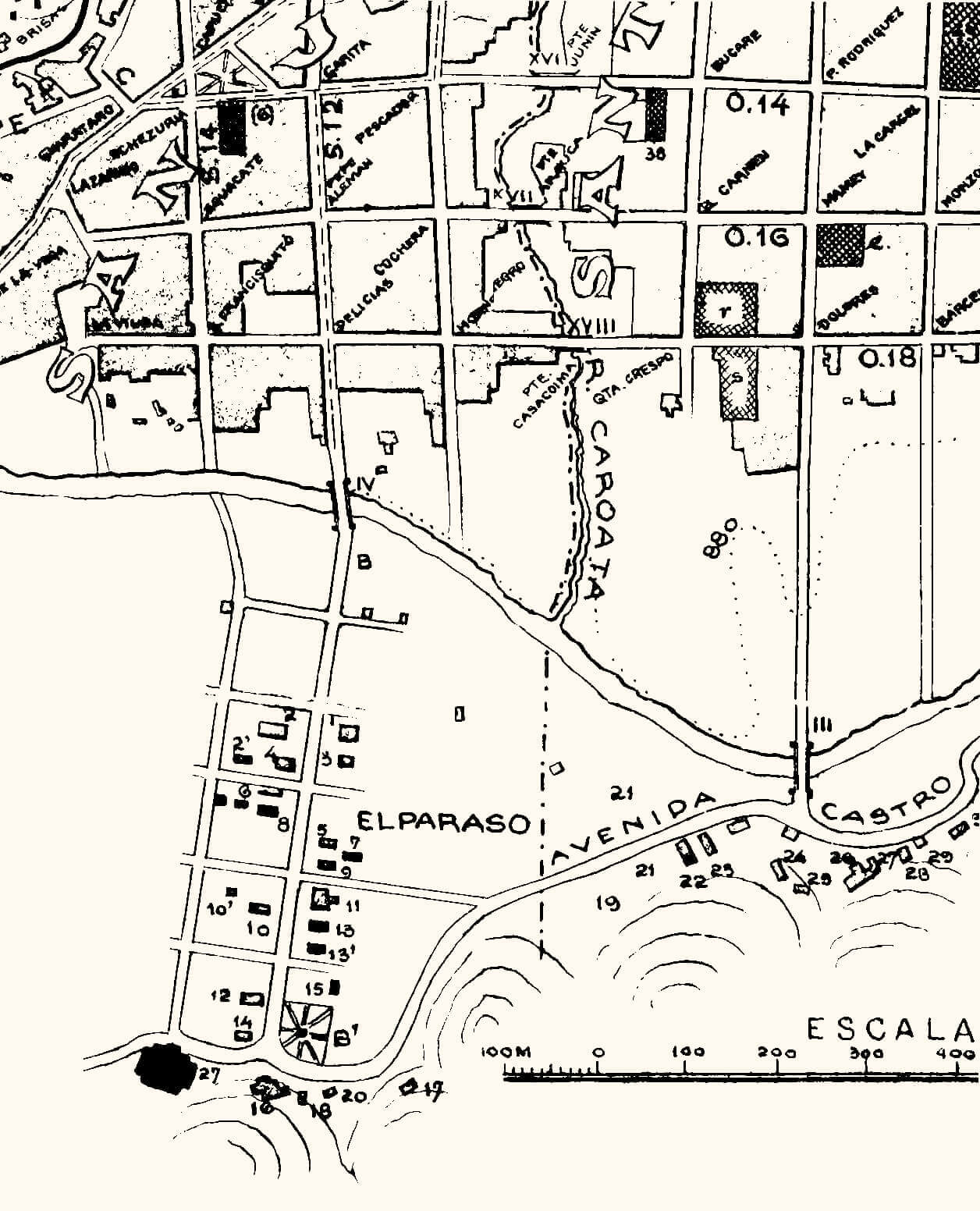
HC-37
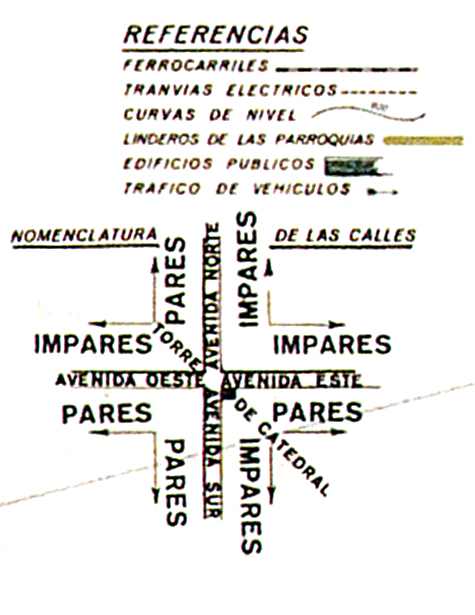
HC-39
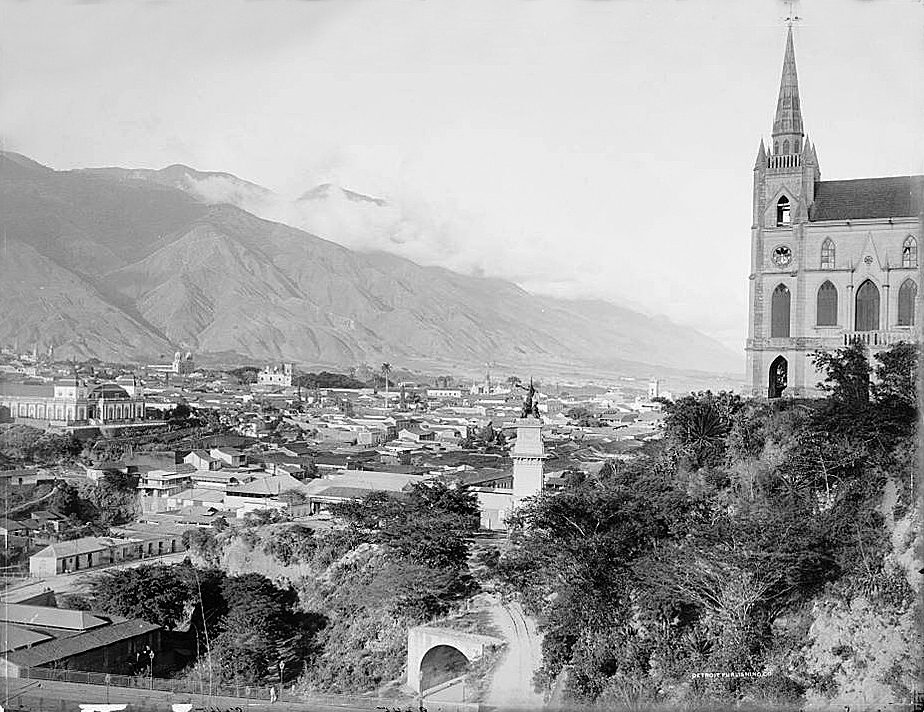
HC-38


